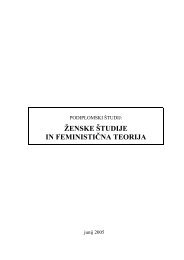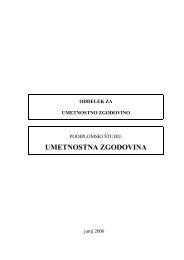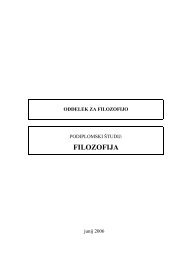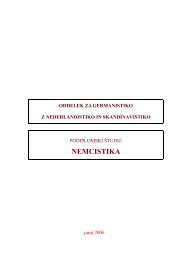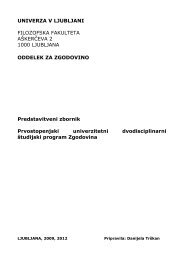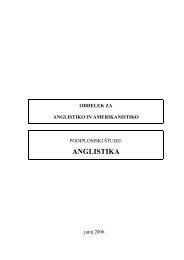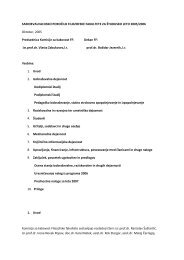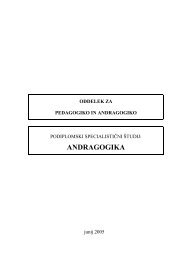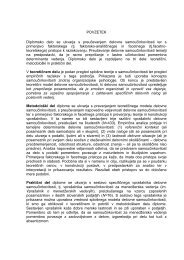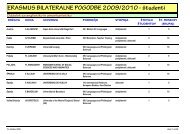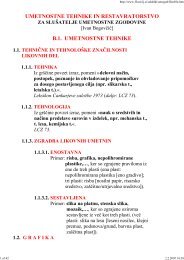LINGUISTICA XLIX - Filozofska fakulteta - Univerza v Ljubljani
LINGUISTICA XLIX - Filozofska fakulteta - Univerza v Ljubljani
LINGUISTICA XLIX - Filozofska fakulteta - Univerza v Ljubljani
You also want an ePaper? Increase the reach of your titles
YUMPU automatically turns print PDFs into web optimized ePapers that Google loves.
2. The rules of parallel alignment:<br />
2.1. value A tends to associate with value C,<br />
2.2. value B tends to associate with value D.<br />
3. The consequences:<br />
If a language distinguishes between perfective and imperfective aspects such that<br />
one combines with an ergative agent and the other combines with an unmarked<br />
agent, then it is the perfective aspect that tends to combine with an ergative agent<br />
and it is the imperfective aspect that tends to combine with an unmarked agent.<br />
Q.E.D. (The reverse situation is not expected.)<br />
(16ii) The two variants: the perfective and imperfective aspects. – The deduction proceeds<br />
in the unnatural environment “patient”.<br />
1. The assumptions of Natural Syntax:<br />
1.1. >nat (imperfective, perfective) / aspect<br />
I.e., the imperfective verbal aspect is more natural than the perfective verbal<br />
aspect. – It is easier to perceive a verbal act as whole in the perfective than in the<br />
imperfective verbal aspect. This circumstance is presumably in the interest of the<br />
hearer (decoder) and therefore the perfective verbal aspect must be mentioned in<br />
slot B of the scale. According to the criterion of favourable for the hearer, item (a)<br />
in the list of axioms. Variants of scale 1.2 have been in fashion at least seventy years.<br />
1.2. >nat (unmarked, dative) / patient<br />
I.e., an unmarked patient is more natural than a dative patient. – According to<br />
the criterion of least effort, item (b) in the list of axioms.<br />
2. The rules of chiastic alignment:<br />
2.1. value A tends to associate with value D,<br />
2.2. value B tends to associate with value C.<br />
3. The consequences:<br />
If a language distinguishes between perfective and imperfective aspects such that<br />
one combines with a dative patient and the other combines with an unmarked<br />
patient, then it is the perfective aspect that tends to combine with an unmarked<br />
patient and it is the imperfective aspect that tends to combine with a dative patient.<br />
Q.E.D. (The reverse situation is not expected.)<br />
(17) = h&T (68). yukulta (Queensland). The ergative and antipassive constructions.<br />
The antipassive is used, inter alia, when the agent and the patient do not<br />
obey the Agency hierarchy; for instance, when the agent is the 3rd person and the<br />
patient is the 1st or 2nd person.<br />
The antipassive is used in non-accomplished non-complete environments. The<br />
ergative construction is used elsewhere.<br />
The patient of the antipassive clause is demoted to an oblique case. The construction<br />
is strongly detransitivized. Thus deductions (17i–ii) are not limited to the unnatural<br />
environment “transitivity” and chiastic alignment is not indicated.<br />
89



